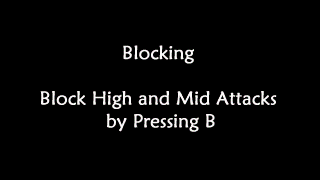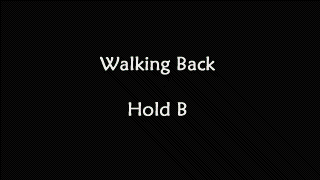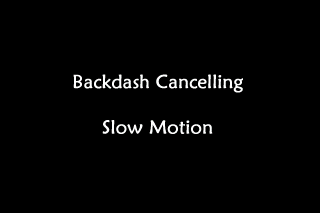The Beginner's Guide to TTT2 by AAK - Unit 1: Basics
 AAK ON
AAK ON  Wednesday, September 5, 2012 at 8:03AM
Wednesday, September 5, 2012 at 8:03AM 
Tekken being a 3D game and having a plethora of options at your disposal from the very beginning can be extremely overwhelming for newer players. With hundreds upon hundreds of things you do at the tip your inputs will really cause a lot first timers to just mash away and see the results. This guide was designed for all these newer players in mind where the whole structure and depth to Tekken will be broken down step by step from basics to more advanced tactics. Hopefully then, everyone will have a clear idea of what Tekken is, how it can be played, and what was the cause of things happening when you experience them.
Again, Tekken is a massive, massive fighting game. Almost unanimously considered the fighting game with quantitatively the greatest number of mechanics and properties out of any other game in the genre. And hence it goes without saying that learning to play Tekken is quite an investment. But with the amount of control Tekken gives you access to, the reward for finally learning the game is unparalleled. Well, then let's get started:
I. HUD

The HUD is extremely simple,there’s nothing so complicated like in the levels of Blazblue’s HUD. It basically shows how much health you have, how many rounds are left, and the time left for the round to finish. The only unique thing in the lifebar for Tekken Tag is the blinking bar. The blinking bar indicates that Netsu is activated and that’ll be explained later on.
In TTT2 is that each individual character HP is lower than that of Tekken 6. The logic behind that is that is since now being a tag game you have total pool of 2 characters instead of 1 like in Tekken 6. Hence the overall life health for the entire match is greater. However, this isn't the case for solo mode, it's not known what the specific HP is for solo characters and it also changes depending on whether the solo player is battling a team or another solo player. Once the game releases and more testing is done, the exact HP values will be posted.
II. Controls

The Tekken controls have always been probably the most intuitive out of all the fighting games where each of the 4 face buttons represent the limbs of your fighter: 1 for your left hand, 2 for your right hand, 3 for your left foot, and 4 for your right foot. Based on these alone it was always fairly obvious what command would represent what attack just from visually looking at the moves since you’d automatically associate a button with whichever limb you saw go out to attack.
And the Tekken pad warriors generally play with their fingers just like an arcade stick simply because all of the individual commands in Tekken can be mapped onto all 4 of the face buttons so there is no need to resort to your thumbs where it might be difficult to press combinations like 1+2, 3+4, 2+3, 1+4 among others. However, since the release of SFIV vanilla, tournaments don't necessarily have a strict ban against button mapping onto the shoulder buttons so there has been a rapid influx of pad users in tournaments using their shoulder buttons. Therefore, you can still play with your thumbs, but go with whatever you prefer just as long as nothing is programmable. You can see more about the Pad vs Stick Debate in Aris's video.
III. Notation

The majority of all the resources for Tekken use the notation you see above. Yes, it might be a pain after it's so different from the 8wayrun standard using numpad directions, HOWEVER, the letter notation you see above for Tekken is needed because so many moves are pressure sensitive where you have to differentiate between a tap and a hold, for example, u/f,4 will do something much different than U/F,4. In the first you only had to tap the u/f, in the second you had to hold the U/F (hence it's capitalized).
Source: [Tekkenzaibatsu Legend]
IV. Blocking

You Block in Tekken the same way you do in most 2D games by just holding back. HOWEVER, the main difference between Tekken and those 2D game is how all mid attacks are considered overheads in Tekken. Hence, Any mid attack must be blocked standing high. The only exception are special mids that can be blocked high or low, and that move is usually just given to the d+1 crouch jab for most characters. Also, unlike other 3D games like Virtua Fighter, in Tekken you can't block if your sideturned to your opponent or backturned, you will eat all the damage, and that where a lot of deadly tech traps will come into play in Unit 4.
V. Movement
This is the core fundamental aspect people playing Tekken need to grasp. Since Tekken doesn’t have any zoning style projectiles, newer players automatically run up and start attacking (or mashing). What they really should be doing is trying to learn the deep footsie game and learn to space themselves properly.The first thing people might realize is how hard it is to simply back away from a barrage of attacks your opponents throw at you. You can’t simply jump away and air tatsu out of a sticky situation. Holding back to walk back goes at a fairly snail pace, and backdashing has an extremely ugly recovery time after the backdash. What you have to learn is backdash cancelling. This is a technique founded by the Korean immortals Sung Dong Min, Jang Suwan, and Jang Iksu Tekken back in the Tekken Tag Tournament days. It was the birth of a new frontier of turtling possible in Tekken. See the gif below:

Now watch the actual backdash cancel again in slow motion:

You can see the Dragunov player holding back to back away, the next sequence you see Steve doing 2 back to back backdashes (I’m sorry it was VERY hard to find footage of people doing only backdashes) it’s kind of hard to notice but after Steve takes a step back he will be trapped in that position with a fairly large amount of recovery frames. However, then you can see Kazuya backdash cancel where he cancels the recovery of the backdash by going into crouch by pressing d/b and backdashing again before followed by another backdash cancel and repeats. Properly backdash cancelling enables you to properly space yourself and consistently punish your opponent successfully. This is the stand alone tactic which differentiates the best players and simply why the Koreans continue to dominate every iteration of this series. This and this are videos from Aris further emphasizing the importance of movement in the game.
Backdash cancelling is paramount of importance but it’s not the only method of punishing your opponent. Simply ducking a good high in a string you anticipate or even sidestepping a linear move you also anticipated can also lead to big damage:

But if you’re really hungry for damage and you timed your sidestep perfectly against a linear string or a hail-mary, you can go further and sidewalk all the way to behind your opponent to get some even bigger damage. But you have to be careful if your opponent knows you’re sidestepping them, they can use various tracking moves in their arsenal to catch you. Or they can simply use homing moves which will catch regardless of the direction your opponent attempts to sidestep in:
![]()
Notice the streak that followed Lili’s leg as she did the rotating kick on Jin as he attempted to side-walk her, that’s the visual cue that tells you it’s a homing move.
That will cover it for the basics. Take into account that for the basics section, everything highlighted was about defensive options. That's because in many eyes Tekken is mostly considered a very defensive and footsie heavy game and the framework for the game you build should be based off these fundamentals of movement and defense. But to have a good defence, you also need good character knowledge to know what moves can be ducked or sidestepped to punish in turn. The other CORE feature of defence is the wakeup options, but I decided to include that in the later units just because of how complicated it might appear and how much thought process needs to go in to properly execute them in the match.
 guide in
guide in  Avoiding The Puddle,
Avoiding The Puddle,  TTT2,
TTT2,  Tekken Tag Tournament 2,
Tekken Tag Tournament 2,  news,
news,  strategy,
strategy,  tekken,
tekken,  tournaments
tournaments 










Reader Comments (12)
you may also input backdash like this: d/b b, d/b b
Lol at MYK getting obliterated.
It looks like MYK was serving up the obliteration on Hart...
back dash cancel is not really basic. its hard to do consistently specially on pad.
back dash canel IS basics in tekken, learn how to do it or die trying
The main thing I'm struggling with using bdc is that the d/b, b, d/b method doesn't work, I'm using a square gate TE stick and when I hit the d/b and release I'm not inputting any other direction at all, especially not the first b. I'm literally having to force myself to curve the stick upwards during release and change the sticks path back to neutral. Doing that not only ruins the tempo and the speed but it means the distance I backdash before I hit d/b is way too short.
This technique seems to be designed either for a different kind of stick or for someone who doesn't hit diagonals cleanly.
Pushing the stick too far. You only need to make it click.
@Causus
bdc can take awhile to learn, and it is definitely doable/practical on a Sanwa stick such as yours (that is what I use). When I turn on command history, this is what shows up when doing a clean bdc.
b b,d/b,b b,db,b b,d/b,b ....
I hold the second "b" in the initial back dash, quickly slide to "d/b", then let go to neutral. When you let go to neutral it should register an immediate "b" after the "d/b". Then immediately hold "b" once again and slide to "d/b" rinse and repeat. You are essentially canceling your back dash with a quick crouch while holding back to block. Also once you get it down, try to find a rhythm in which maximizes the back dash distance for your character.
@Miga-Oh: I think I'm an idiot, I've always been rough with my stick (lol) and the thought never occurred to me not to push all the way d/b. I'll try it when I get home. Thanks man.
@Matthias: Seems you didn't understand what I wrote. I already understood the theory of the negative edge back input, and I've already watched tutorial videos which showed the same thing. But when I turned on command history I didn't get any back input when I released to neutral. I would do the motion you described and it'd read as just d/b, b, d/b, b. Here's hoping that its like Miga-Oh said and I just need to be lighter with the input.
Okay, sorry for going overboard on the things you already knew lol.
this is fucking good shit - props
WoW!! Fight!! I like it.